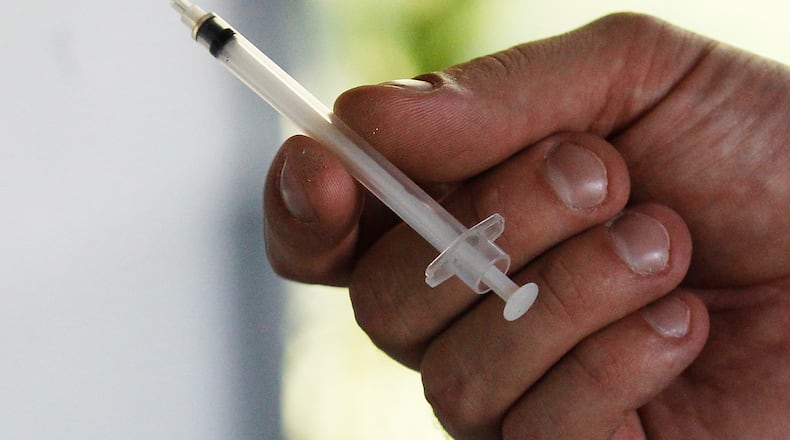In 2017, as Ohio Attorney General, DeWine was one of the first in the nation to sue opioid makers and drug distributors for their role in flooding the market with massive amounts of highly addictive opioids.
“Ohio’s families and communities have been hit hard by the opioid epidemic,” DeWine said. “While nothing can make whole the losses sustained by Ohioans who have been affected by opioids, it is welcome news that the first payments are going out this week to local governments.”
Over the term of the settlement schedule the county will receive a total of $3.8 million to $5.4 million, depending on a host of still unsettled variables, plus access to a share in $38.1 million $54.4 million more, as part of regional group of seven counties that will decide future funding distributions.
A settlement has also been reached with Johnson & Johnson but those details haven’t been solidified. County Administrator Judi Boyko said early estimates are annual allocations of $97,243 to $138,919 over nine years for the county’s share.
Commissioner Cindy Carpenter has been working on a local task force setting parameters for the larger sum of money. She said the biggest challenge is making sure Butler County — the largest entity in the regional group — gets the lion’s share, because with a larger sum of money they can really make a difference.
“Absolutely it will make a difference...,” she said. “Definitely we have an organized effort in our county to make the most of the opioid settlement dollars.”
She said she is hoping her fellow commissioners will agree to use recommendations from the task force for spending the county’s direct allocation. Commissioner T.C. Rogers said the three of them should make the call. There has already been talk about spending some of it on the new emergency mental health crisis center slated for the Care Facility building, after the nursing home operation ends.
“It’s not going to be for a capital expenditure, it’ll be for some kind of treatment operation or education or transition,” Rogers said. “Actually I would envision helping individuals, not to pay for some extra board to think up new ways to spend it.”
Nearly 4,000 jurisdictions nationwide filed lawsuits in state and federal courts years ago when the heroin epidemic was killing their residents, and budgets trying to deal with the pervasive problem.
While the court cases have been crawling along, fatal drug overdoses have started creeping back up. There have been 89 suspected or confirmed drug overdose deaths as of June 30. There were 172 last year, 177 the previous year, up from 159 in 2019. The five-year-high came in 2017, when 232 people died.
Scott Rasmus, executive director of the Butler County Mental Health and Addiction Recovery Services Board, said the task force is considering putting money into the crisis center, transitional and permanent housing —that includes support services — for recovering addicts and preventative measures.
While the annual amounts in this distribution are relatively small, due to the long payout schedule, “any money is better than no money at all.”
“It is some significant money but over that 18-year period it can only go so far and support so much,” he said.
This money is part of Attorney General Dave Yost’s OneOhio settlement with the major distributors. It stems from investigations by Yost and other state attorneys general into whether the three distributors fulfilled their legal duty to refuse to ship opioids to pharmacies that submitted suspicious drug orders and whether Johnson & Johnson misled patients and doctors about the addictive nature of opioid drugs.
He negotiated on behalf of all the governmental jurisdictions in the state including counties, cities and others. Most Butler County jurisdictions signed onto the settlement. Simple math puts the total collection from this settlement at $8 million countywide, but annual collections could vary, according Chief Assistant Prosecutor Dan Ferguson.
He told the Journal-News previously the long pay-out period was by design and for the greater good.
“These are not lump sums that get dropped into anybody’s bank account, they’re time payments,” Ferguson said. “Part of the object of doing the time-payments, I think part of the courts’ object is they don’t really want to see these drug distributors run into bankruptcy, because frankly society needs many of the products they make and distribute.”
Outside of the county, Hamilton received the largest distribution at $58,459 and the smallest, $849 annually went to Hanover Twp. The Journal-News reached out to other jurisdictions and most are still pondering how to spend the money. West Chester Twp. got $32,298 and plans to use the funds for “behavioral wellness services” for first responders.
Middletown was one of the hardest hit areas during the heroin epidemic and newly named City Manager Paul Lolli said while his council hasn’t made any decisions he will recommend putting some of their $50,355 toward the quick response teams.
“They’re still going out on a weekly basis and following up on opioid overdose runs we’ve had the previous week, and they are following up with those people not only with drug counseling but also with mental health an addiction services,” Lolli said.
The commissioners sued 20 drug makers and distributors in federal court in 2017, they sought $5 million in that lawsuit, which is now part of the multidistrict litigation ongoing in the Cleveland federal court. That litigation is for all intents and purposes over where the county is concerned.
There are two other lawsuits pending against Purdue Pharma and Mallinckrodt in federal bankruptcy court so it is hard to say when those funds might be forthcoming.
About the Author

